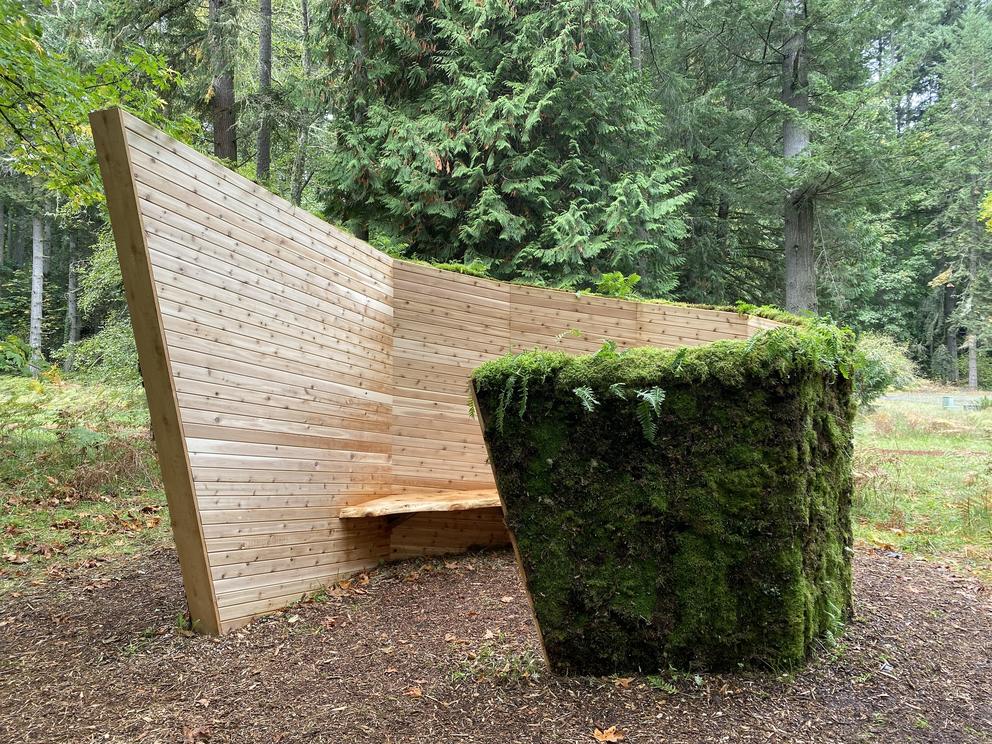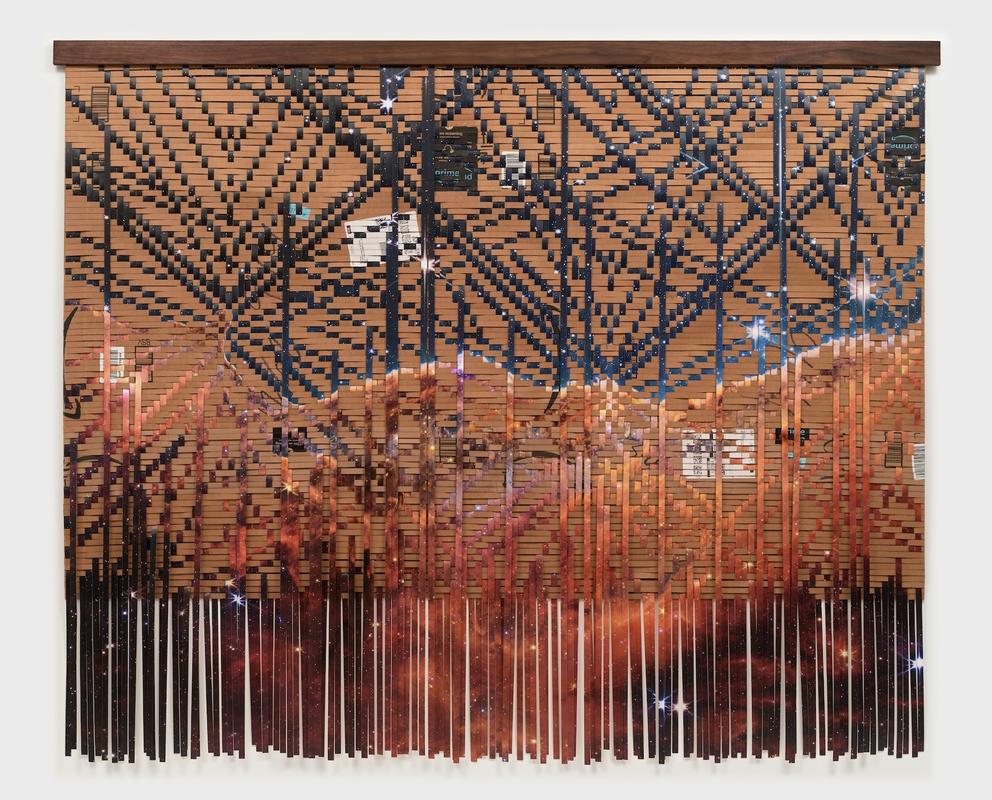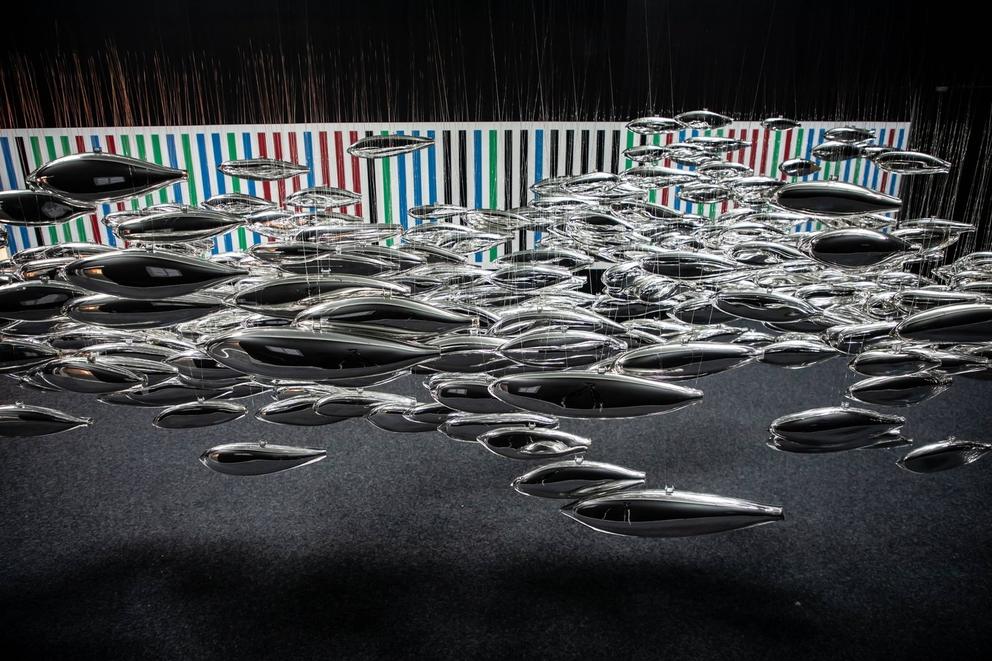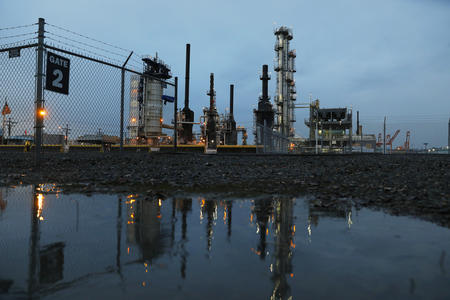To celebrate this planetary shift — as well as the last ArtSEA of 2023 — I’m highlighting visual art that embraces the Earth. Sometimes this art gives you a hug, too, as in Seattle artist Alison Stigora’s new installation Embrace at the Bloedel Reserve on Bainbridge Island.
ArtSEA: Notes on Northwest Culture is Crosscut’s weekly arts & culture newsletter.
A site-specific, community-constructed artwork that will stay up for several months, Embrace is a simple but powerful piece that you might miss if you aren’t looking for it. (I watched a couple people do just that when I visited.) It’s located near the Sheep Sheds, just off the main garden path.
The outside of the piece is fully camouflaged in living mosses and ferns. But walk around to the back and Embrace opens into a welcoming, sheltered place of pause. Stigora based the shape on the Fibonacci spiral, that magical geometry found in so many natural forms.
Sitting on the Western red cedar bench inside the 8 x 11 x 10-foot sculpture, you’re surrounded by a rising wall of natural wooden planks, with the tall trees of the forest visible just beyond. There’s a sort of speaker effect by which sounds inside are amplified, but it’s nice to just sit quietly and contemplate your connection to nature.
(While on Bainbridge, consider stopping by another recent work of outdoor, ecologically themed art: Pia the troll, whom I wrote about in August.)
Stillness, quiet, nature — guaranteed salves for the mad dash of the holidays. And you can find all of the above at the Pacific Bonsai Museum in Federal Way. In addition to its year-round outdoor displays of artfully pruned bonsai, the museum is currently showing Stone Images XIII (through March 31), a collection of “viewing stones.”
A tradition for 1,500 or so years in China, Korea and Japan, these large, naturally formed stones are collected for the mini-landscapes (and water-scapes and celestial-scapes) suggested by their nooks, crannies and contours.
Take a glance and you might notice a grey rock flecked with color. But gaze a little longer and you start to see constellations and comets.
Brazil-born and Los Angeles-based artist Clarissa Tossin also has her eyes cast skyward. In her multimedia show to take root among the stars (at the Frye Art Museum through Jan. 7), she explores both the human impact on Earth and the likelihood that we’ll cause the same destruction to whatever other celestial bodies — the moon, mars, asteroids — we can get our hands on.
Acknowledging her personal role the environmental crisis, Tossin pulls from her own trash to create several of her striking pieces. These include tapestries in which she interweaves strips of cardboard Amazon shipping boxes with large-scale deep-space images gathered by the James Webb Space Telescope.
These captivating wall hangings hint that the space colonies envisioned by Jeff Bezos and other billionaires may be just as littered with Amazon boxes as our own front stoops.
Giving a similar sci-fi feeling (Tossin finds inspiration in prescient stories of Octavia Butler) is a long, colorful log called “Future Fossil.” She created the telephone-pole-like object by stacking a cedar tree trunk, rocks, leaves, plaster, foam, cement and her own recycled plastics — the last of which she melted down until the fumes overcame her.
The result is an imagined core sample from the future (ruined) Earth. Examining it up close is both repulsive and gripping.
I was reminded of Tossin’s excellent and expansive show when watching the new animated space series Scavengers Reign (streaming on Max). No, it has nothing to do with local arts (as far as I know)! But it is so good I’m compelled to recommend it.
Beautifully animated with a sci-fi storyline that ranges from gory to incredibly touching, the series follows the fates of a deep-space freighter crew who have crash-landed on a wild planet. The far-out ecosystem is astoundingly detailed, especially in terms of how each creature interacts with its environment.
You can’t help but think of how our earthly flora and fauna intersect — and the role humans have played in damaging the delicate balance of these relationships.
But let’s get back to local arts, where you can marvel at the majesty of Earth’s animalia in several current shows. For starters, there’s the wild mix of creatures in prints by Japanese artist Keisei Kobayashi at Davidson Galleries (viewable online).
Born in 1944, Kobayashi creates wood engravings that have the feeling of a core sample, given his densely layered mix of flora, fauna and manmade elements. In these fantastical scenes, fish appear to swim above cities as flowers overtake crumbling high rises. Crows cavort with hammerhead sharks in skies alive with human eyes.
Weird, yes! But these mashups radiate a powerful sense of collision and environmental urgency.
For more realistic groupings of animals try Joseph Rossano’s The Salmon School (through Sept. 15 at the Museum of Glass in Tacoma), where 450 suspended blown-glass fish emphasize the importance of this keystone species. Or see the amazing murmurations of starlings at the National Nordic Museum, as captured by Danish photographer Søren Solkær in Sort Sol (through Mar. 10).
Lastly, there’s the Museum of Northwest Art in La Conner, where the group show Surge: Mapping Transition, Displacement, and Agency in Times of Climate Change (through Jan. 21) pairs local artists with local scientists. I’m guessing the scientist half came up with that exhibit title, but the art they made together is strong.
There’s a whole room at Surge devoted to Natalie Niblock’s lovely paintings of “at risk” Northwest birds accompanied by their calls (I wrote about it in October). And the exhibit includes many more artful calls to action, including “Roots of the Witness Tree” by Mary Coss, who imagines 200 years in the life of a Skagit tree. Her intricate wire stump reveals its battle scars as all trees do, by way of dendrochronology — the width of its 200 rings.
Also at Surge: Todd Horton’s beautiful “Tidal Drawings,” for which he attached canvases to pilings along the Samish River, so as to “record its dreaming emotional response to the world around it.”
The message is loud and clear. Earth to humans: time to embrace our place in space.
Get the latest in local arts and culture
This weekly newsletter brings arts news and cultural events straight to your inbox.





